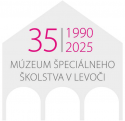Physical impairment
Pedagogy for the physically impaired, ill and infirm deals with the physical impairment. It is a branch of special pedagogy – somatopedagogy, according to which we recognize the three categories of the physically impaired:
a) the physically impaired with motion difficulties and possibly, particularities in appearance, their education takes place in special schools for the physically impaired;
b) the ill whose state of health does not allow education in mainstream schools so they are educated individually staying in a bed in medical facilities;
c) the infirm who stay in sanatoria or medical institutions for a short or long time due to medical indication.
The most common movement disorders include: gait disturbances, balance disorders, movement disorders.
The term of physical disabilities represents anomalies of such a degree that differentiate an individual from the others, for instance upper limb malformation, spinal distortion, lower limb malformation, significant joint deformities and others.
The group of the ill incorporates children who are hospitalized in medical facilities due to long-term homeostatic balance disorders and thus can not be educated in mainstream schools. Their educational rehabilitation focuses on educational aims as well as supportive positive educational impact on patients.
The group of the infirm covers children who due to treatment or after-treatment stay in sanatoria for children or medical institutions for a long time and they require educational rehabilitation in which the emphasis is on communication skills development through school subjects.


